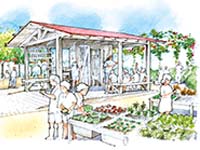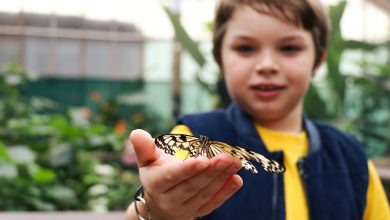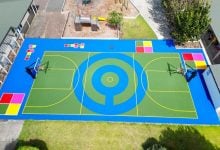Wynyard Quarter Garden to Table: Innovative garden project arouses trans-Tasman interest

 A collaborative scheme for Auckland’s waterfront could be an international trendsetter.
A collaborative scheme for Auckland’s waterfront could be an international trendsetter.
A three-way partnership between a charitable trust, a prominent landscape architecture and architectural company and Waterfront Auckland will transform part of Auckland’s Wynyard Quarter this year. Work on the site is already well underway.
The Garden to Table Trust is working with Waterfront Auckland to create an extensive edible garden and kitchen classroom facility to educate children from up to five local schools. The 1500 sq metre area will help further the trust’s vision of teaching all New Zealand primary school children how to grow, harvest, prepare and share fresh, seasonal food. Also directly involved is Opus Architecture and Landscape Architecture, a major New Zealand company that has established a reputation for its skill in designing inventive buildings for schools throughout the country.
Garden to Table is affiliated to an Australian initiative – the Stephanie Alexander Kitchen Garden Program. The fundamental philosophy of both is to give children memorable food experiences to form the basis of positive lifelong eating habits.
The Australian programme is government supported and has proved extremely successful. It began in inner-city Melbourne in 2001 and now involves about 20,000 children from more than 200 schools.
The New Zealand Garden to Table programme began in 2008 when food writer and cook Catherine Bell gathered a group of like-minded people together. Three pilot schools joined the project in 2009 and now 15 are signed up – eight in Auckland and the others in Queenstown, Christchurch and Thames – across the decile spectrum. Another 60 schools are on the waiting list.
The children participating spend time in a productive veggie garden and home-style kitchen each week, learning new skills and discovering how much fun it is to grow and cook their own seasonal vegetables and fruits.
Garden to Table trustee, Greig Buckley, says it is recognised around the world that “there’s a real challenge in getting school children to understand food and make it an important part of their lives. That’s reflected in their eating habits and in health issues, such as obesity and diabetes, which are increasingly prevalent here.
“Our programme is really focused on experience-based learning. Research shows it works better with younger children, so our target is seven-10 year olds. It’s very hands-on – it’s all about celebrating food – food they’ve grown themselves, harvested, prepared, and then shared around a table,” said Greig.
“It’s a very broadly based programme that ties together several curriculum disciplines in a very motivating way. The kids just love it.”
Why Australian interest?
So why would the Wynyard Quarter development be attracting interest from across the Tasman? A major reason, said Opus International business development manager Robert Cunningham, is one of available land.
“The individual school concept takes a lot of space. Not all schools have enough. With this project, we have an area that several schools can use.”
Scarcity of resources is also a problem, says Greig Buckley. “We rely on assistance from fund raising, grants – plus corporate and other partners, and it’s hard to justify expensive kitchen/classroom facilities for every school, especially when they’re in the same area. This collaborative approach means we’ll be delivering the programme much more cost effectively. Up to 600 children a week will be using this facility. It hasn’t been done in Australia like this and their programme is very interested.”
Opus Architecture involvement
Opus’s involvement in the project came when senior landscape architect/work group manager, Susannah Kitching, read an article about the Australian programme in Dish magazine by then editor, Catherine Bell, who was interested in introducing the concept here.
“I contacted Catherine and went out to see the programme in action at East Tamaki School, which was just amazing.” Susannah described the gardens as “beautiful” and was impressed with the standard of what the children were cooking and the work done by volunteers from outside the area. She felt Opus should be involved.
“For the first couple of schools we helped, we gifted the design services up to a certain value. At Wynyard Quarter, we’ve charged a reduced fee. We’ve looked at different ways of working with the clients – helping them first before ourselves,” she said.
A key element of the Wynyard Garden project is a 300 sq metre, two-storey building that gave design leader Robert Cunningham and his team a number of challenges. One was that both gardens and buildings must all be removable, as the lease on the site is only for nine years. Should relocation be necessary, it seems likely it would be to another part of Wynyard Quarter. The 120 raised garden beds would be relatively simple to move and avoids the need to use any existing soil on the former industrial site.
The building will include multiple home-style kitchens, all with basic domestic equipment and benches at normal height so that children will find it easy to transfer their new skills to home.
“One of our young architects pointed out that kids love magic, so the building will have ramps and steps and really be three dimensional – almost as if it’s floating – something very exciting,” Robert said. “But it also must have the right design elements for adults when they’re attending a function.
“The site is really a garden with one central building, along with some pods where the kids can store their tools. The building was designed to help demonstrate different ways of growing food in small spaces, including vertical spaces and balconies – maximising the available growing area.”
Public facility as well
The facility is also intended to be a resource for inner-city residents and the public in a controlled way, such as corporate functions. Said Greig Buckley: “We’ll also be using it for after-school or holiday programmes and adult education. People from inner city apartments will be able to learn how to grow vegetables on their balconies and then prepare that food in cooking classes.”
The whole site is designed to be run on green principles with the latest sustainable building materials and technologies enhancing the learning experience. Stage one will open in June with completion set for early 2014.
Image:Robert Cunningham, Greig Buckley and Susannah Kitching









